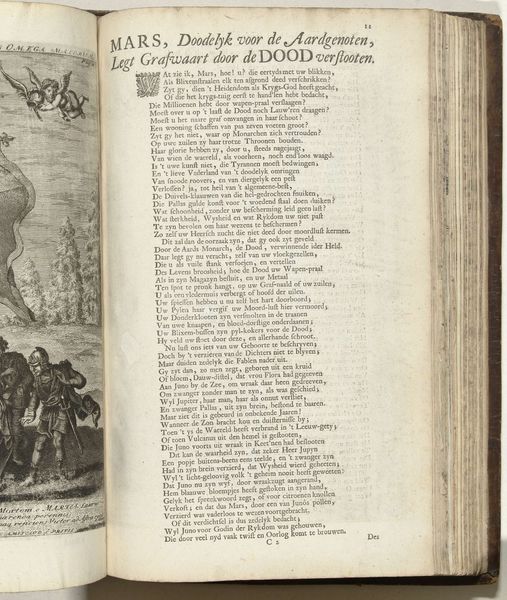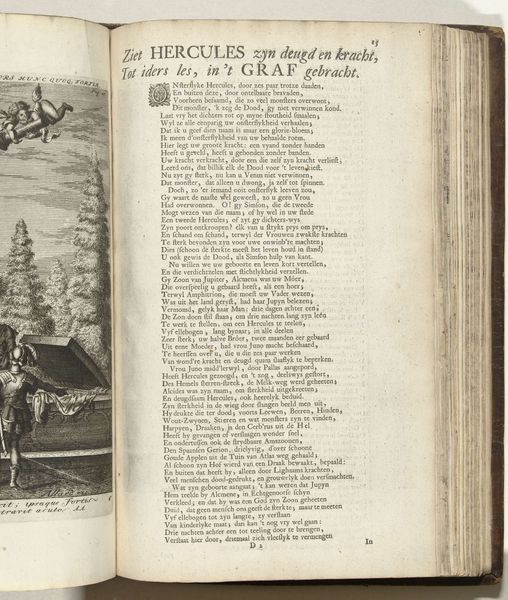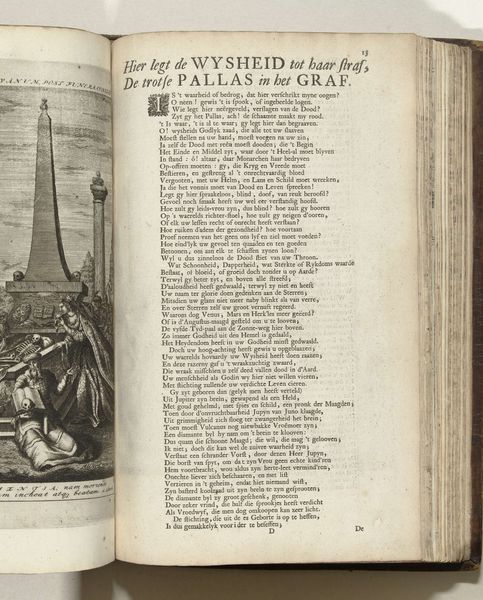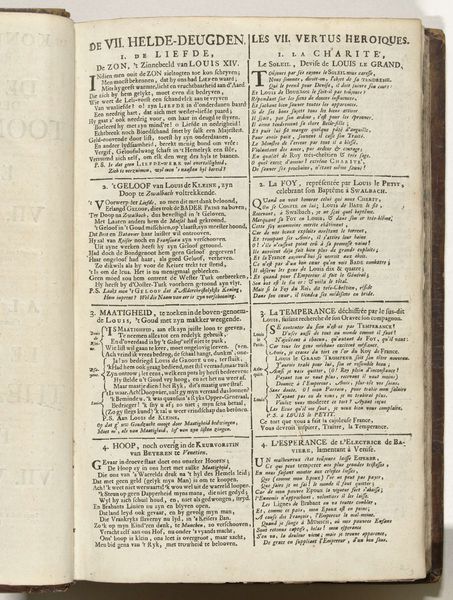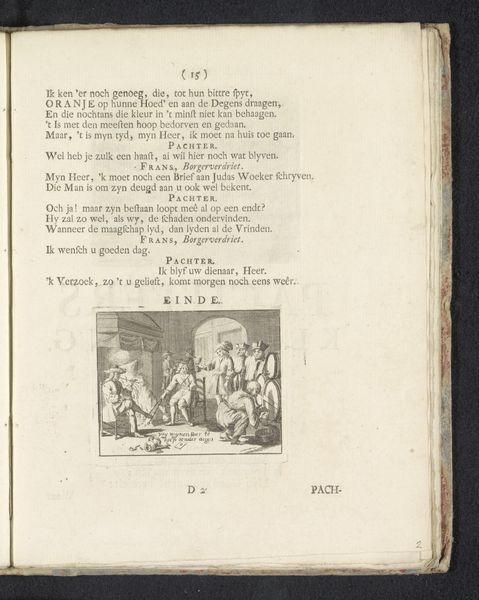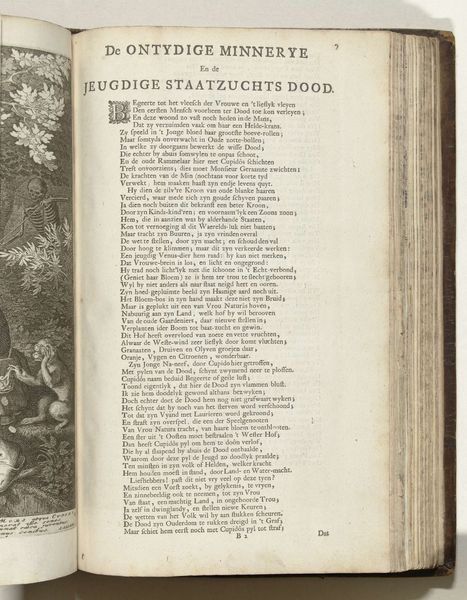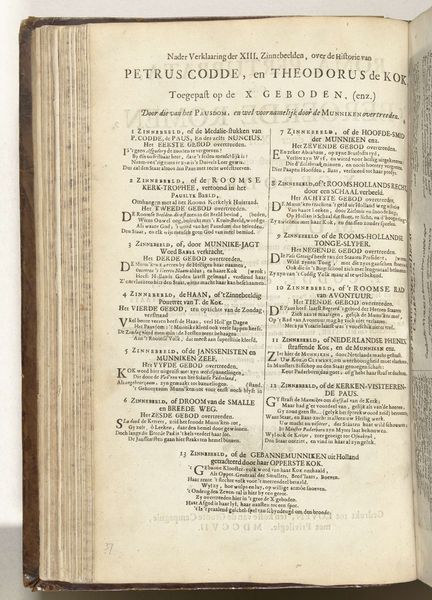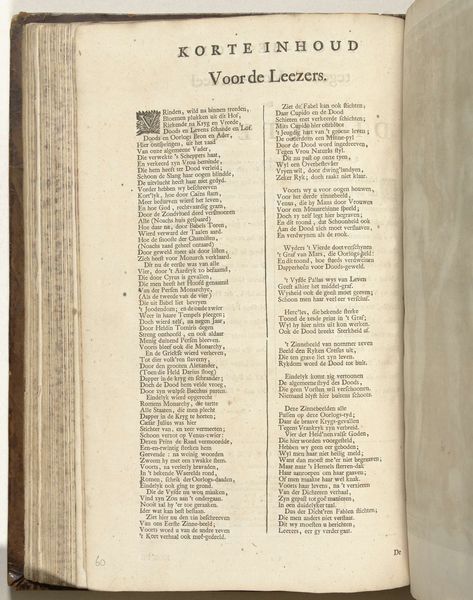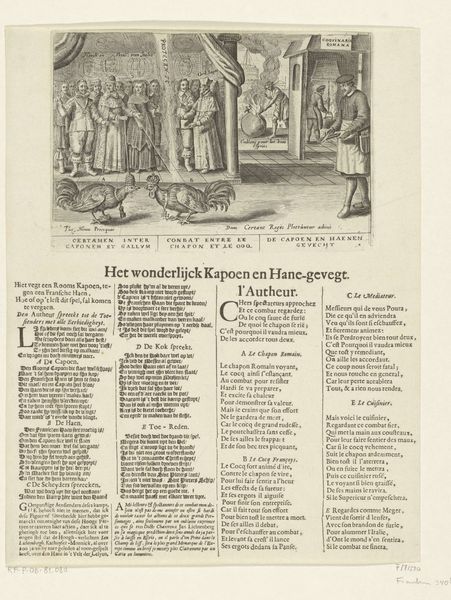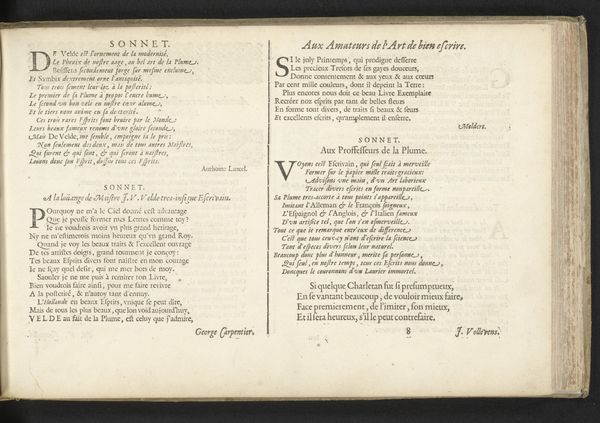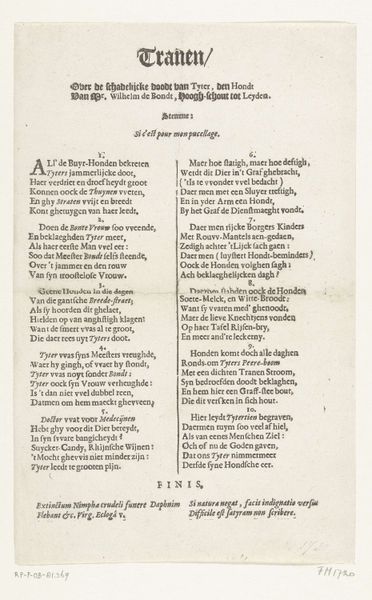
Vers bij de prent met het geopende graf van koning Croesus, ca. 1707-1708 1707 - 1708
0:00
0:00
abrahamallard
Rijksmuseum
engraving
#
baroque
#
history-painting
#
engraving
Dimensions: height 315 mm, width 200 mm
Copyright: Rijks Museum: Open Domain
Editor: So, here we have "Vers bij de prent met het geopende graf van koning Croesus," dating from around 1707-1708, by Abraham Allard. It's an engraving, and what strikes me most is the stark contrast between the elaborate imagery and the very blunt theme of mortality. What do you see in this piece? Curator: I see a potent commentary on power and hubris, deeply rooted in its historical context. Allard's engraving, referencing the story of King Croesus, becomes a stage to reflect on how societal structures value and ultimately dismantle certain bodies while simultaneously celebrating others. Look closely, and you’ll see the visual language reinforces the precariousness of wealth and earthly dominion. What do you notice about the way Croesus is portrayed alongside Death? Editor: Well, Croesus looks completely powerless next to the figure of death, stripped of his regal garments and crown. It's a visual representation of his downfall, a stark reminder of his mortality. But does it delve deeper into societal commentary? Curator: Absolutely. Consider the era. Allard is working during a time of intense colonial expansion and shifting power dynamics. Croesus’s tale, initially about individual downfall, now becomes a warning against imperial overreach. Are we building empires destined for collapse, much like Croesus's kingdom? It encourages us to question whose stories get told and whose are erased in these historical narratives. Editor: So, it’s not just about Croesus as an individual, but as a symbol of larger political and social issues of the time? Curator: Precisely! Allard uses the story to critique the endless pursuit of power and wealth that defined the Baroque era. This artwork can ignite reflection on our modern pursuits that might result in similar vulnerabilities, leading us to inquire about our position within oppressive social frameworks. Editor: I hadn't considered the imperial critique. It’s interesting how a historical story can gain new meanings when seen through the lens of its contemporary context. Curator: Exactly! History is never static; it is always in dialogue with the present.
Comments
No comments
Be the first to comment and join the conversation on the ultimate creative platform.

